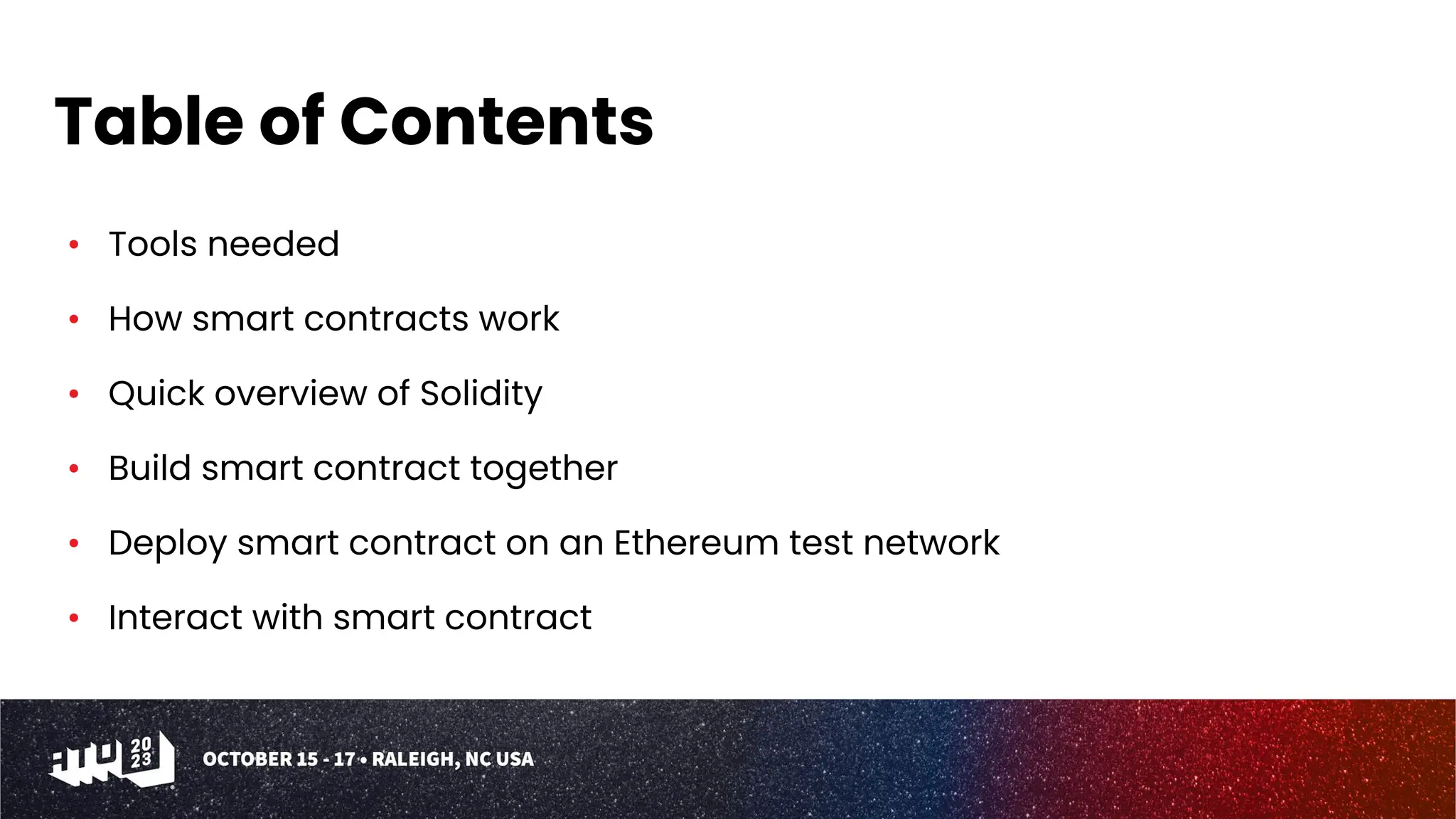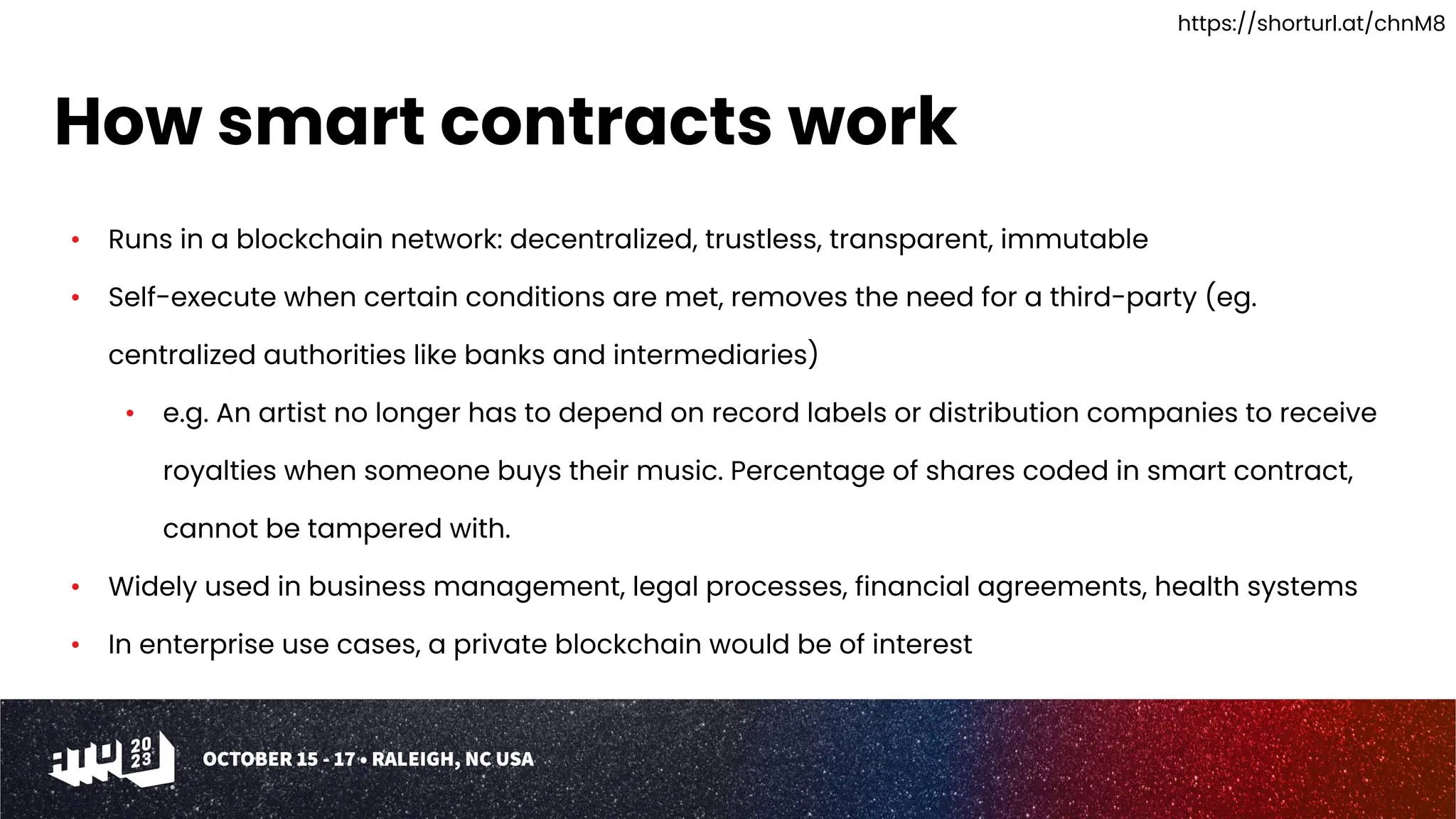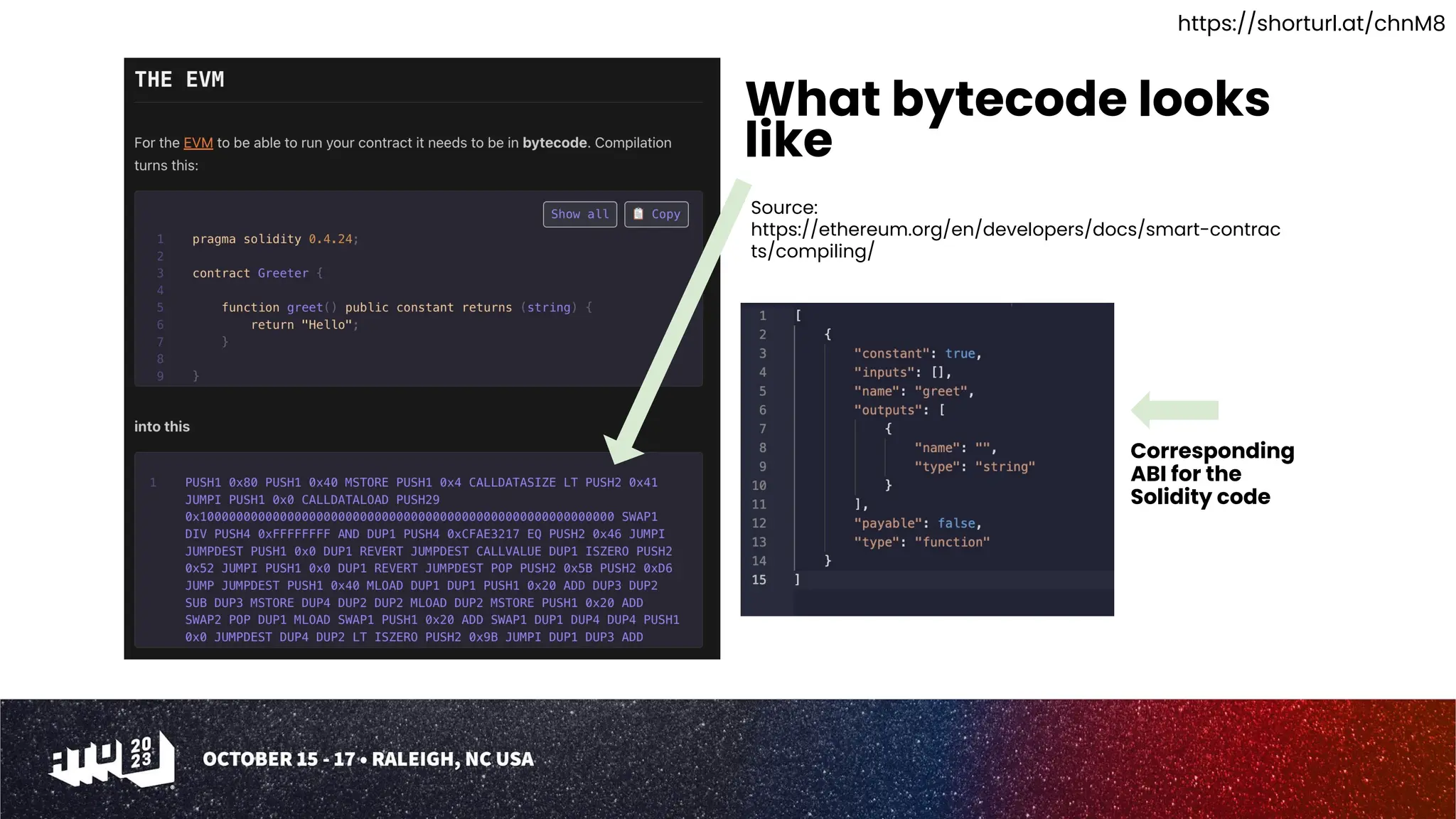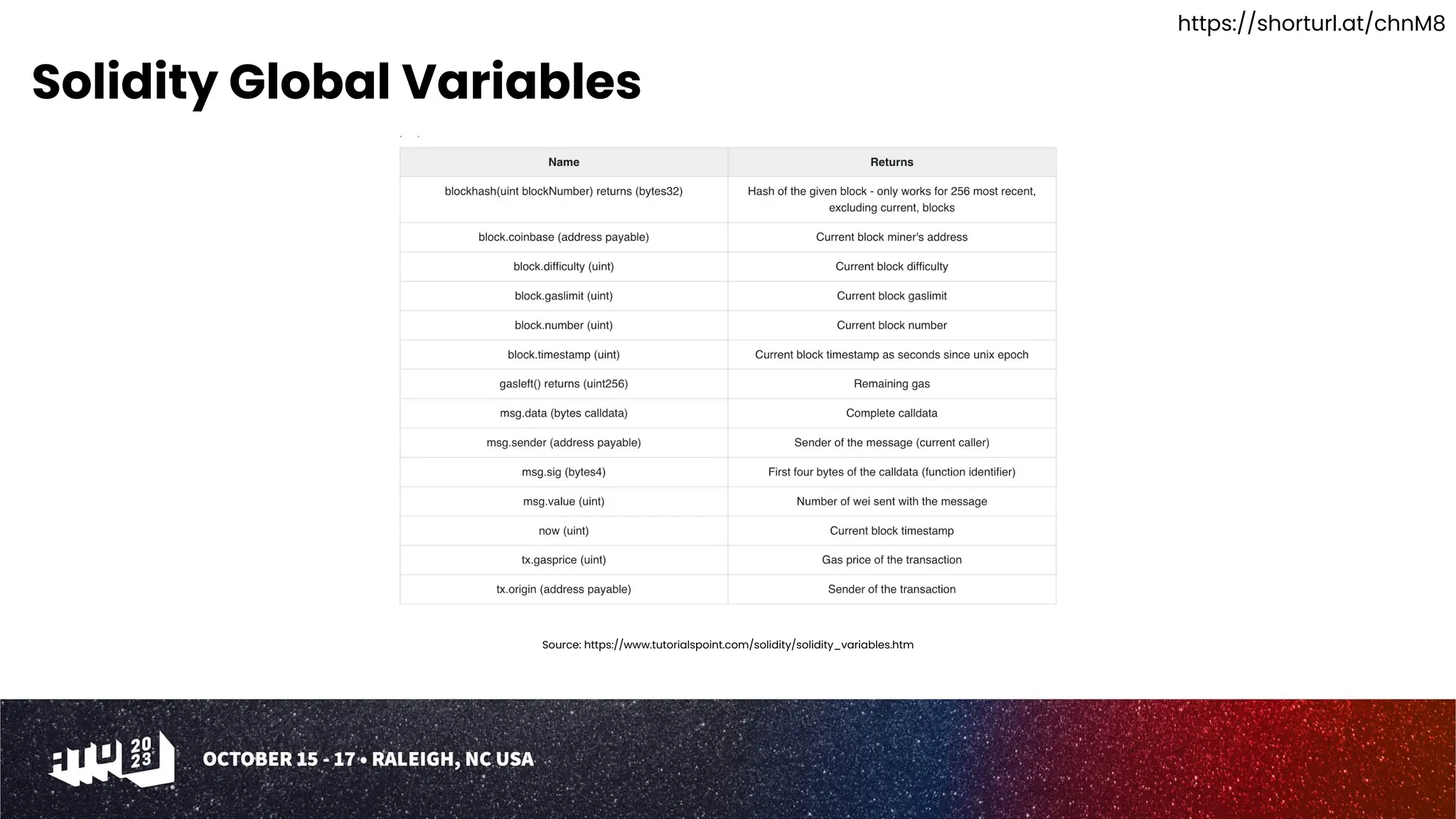The document provides a comprehensive guide on writing and deploying smart contracts, detailing the necessary tools and steps involved. It explains how smart contracts operate within a blockchain network, emphasizing their benefits like decentralization and self-execution. It includes an overview of Solidity coding concepts, deployment on a test network, and interactions with the smart contract using tools like Hardhat and MetaMask.











